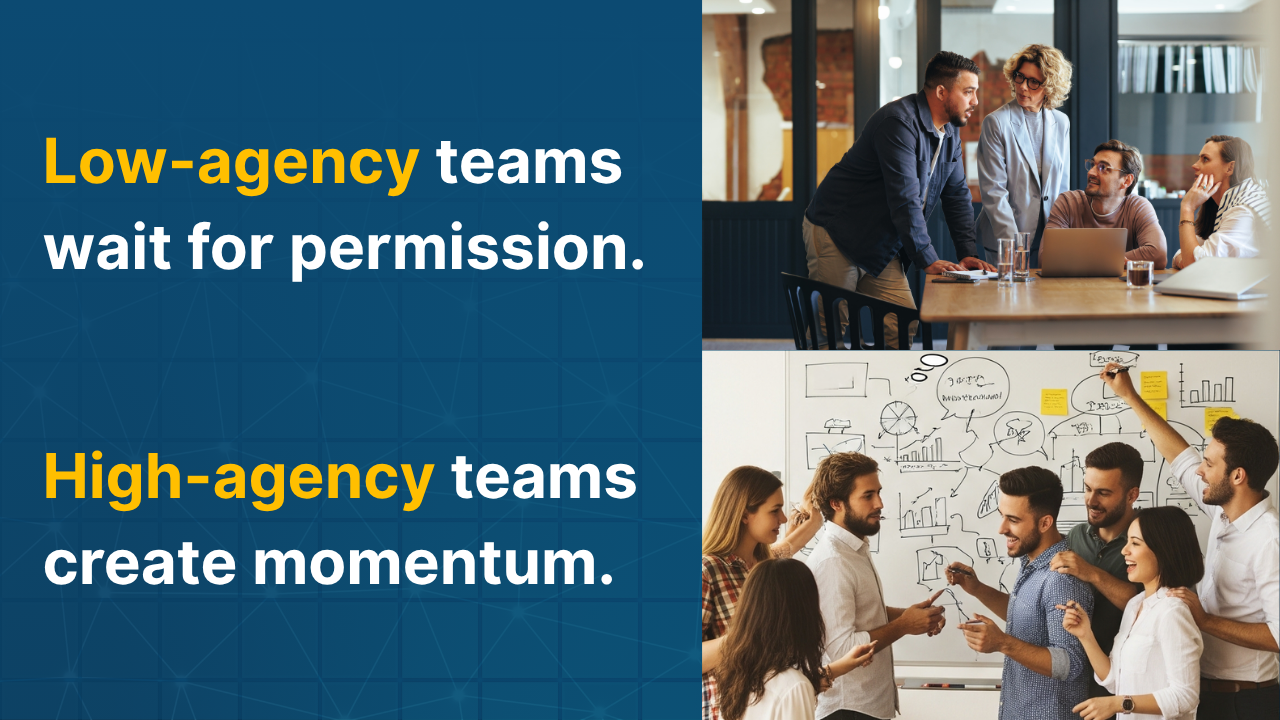
Ownership contracts turn employees into intrapreneurs, driving faster decisions, stronger P&L impact, and cultures where people act like they own the outcome, not just execute instructions.
Building High-Agency Teams turns Task-Doers to Intrapreneurs
- High-agency people are rare. They do not just do the work but they move the needle.
- They see a problem and own the outcome without waiting for permission.
- Most leaders want such people. But only a few build systems that make this behaviour normal.
High-agency teams do not appear by luck. They are designed. Here’s the playbook leaders are using to turn employees into intrapreneurs.
1. Decision Charters for Fast Calls
- What I Do: Give individuals and small teams a written charter outlining the decisions they can make without escalation like spending limits, customer resolutions, product tweaks, operational changes.
- Why It Matters: It removes the “approval bottleneck” and lets the work flow at the speed of competence and not at the speed of hierarchy.
- The Results I have Seen: Decision cycle times drop by 50%, freeing leadership to focus on strategic issues instead of operational sign-offs.
2. Personal OKRs Tied to P&L Impact
- How I approach It: Every role sets quarterly objectives and key results directly linked to measurable revenue growth, cost efficiency, or risk reduction.
- Why this Works: It shifts focus from task completion to business impact. When my teams see the clear line between their daily work and company performance, ownership naturally rises.
- The Payoff: We get a self-correcting culture where people proactively reprioritise based on what moves the financial dial.
3. Praise Loops and Public Retros
- My Practice: Build regular rituals where wins are recognised publicly like weekly praise loops, sprint showcases, or “impact boards” that highlight decisions that created outsized results.
- Why I believe in it: It normalises accountability by making ownership visible and celebrated. Public retros also make learning from mistakes a shared growth exercise, and not a blame game.
- What happens next: It boosts discretionary effort, as recognition fuels intrinsic motivation.
4. DIY “Agency Index” Quiz
- What I use: A short self-assessment (5–7 questions) that scores individuals on behaviours like initiative-taking, problem-solving without escalation, and willingness to make reversible decisions quickly.
- Why I introduced it: It gives teams a tangible baseline for agency and a clear path to improve. I have found that people tend to grow what they measure.
- Impact: It turns “agency” from an abstract cultural value into a trackable skill.
Why This Model Works
Agency thrives where clarity meets autonomy.For me, the formula is simple:
- Decision charters give clarity.
- Personal OKRs tie autonomy to results.
- Praise loops make ownership contagious.
And an agency index creates a shared language for what “taking ownership” really means. When these elements work together, I see teams that:
- Moves faster because they can
- Delivers more because they know why
- Learns better because they share how
High-agency cultures are not about hiring mavericks. They are about creating an environment where responsible risk-taking is rewarded, impact is visible, and initiative is the default behaviour.
Once that culture takes root, I stop managing people and start managing outcomes. And that’s when leadership feels effortless.
#LeadershipDevelopment #HighPerformanceCulture #Intrapreneurship #TeamEmpowerment #BusinessImpact


